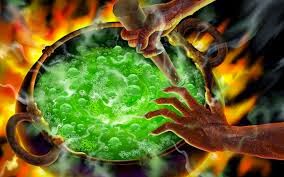It was quite normal for Victorian
dinner tables to have a centrepiece of a dead animal's head. Isabella Beeton
uses images of heads in her recipes but instead of dead, she pictures them alive.
Beeton sets out her recipes with illustrations which are shocking for modern
day audiences.
In her recipes
on beef she begins with a chapter entitled "Quadrupeds". In this
section, Beeton concentrates on cows.
 |
| Google Image |
In the image
above the cow and bull are very much alive in their natural habitat. This is
not an image that I would expect in a recipe book because these cows are not
even close to being cooked and eaten. In Margaret Atwood's The Edible Woman, Marian observes images similar to these:
"The cow in the book, she recalled, was drawn with eyes and horns and an
udder. It stood there quite naturally, not at all disturbed by the peculiar
markings painted on its hide." (151) This typical Victorian cookbook is
interested in the animal itself as food, which differs from many cookbooks we
see nowadays because we live in a time where we would rather not know that our
dinner was once alive. As Terry Eagleton suggests in "Edible
Ecriture", "food is cusped between nature and culture"
Therefore, as culture changes so does the way we look at food and what is
edible.
The image below identifies a cow and bull.
 |
| Google Image |
Around this
image Beeton discusses how to slaughter the animal. This image and the
discussion of slaughtering makes the cooks feel uncomfortable as the animal
here is pictured alive. Under this image Beeton suggests "the general mode
of slaughtering oxen in this country is by striking them a smart blow with a
hammer or poleaxe on the head, a little above the eyes" (158) Now with
this image above of a cow looking harmless and a little worried (maybe that is
just me feeling sorry for the poor animal) are you really going to want to hit
it and kill it? And then eat it? This paratextual relationship shows the picture
very much apart from what Beeton is discussing. This is not what I would expect
in a modern day cookbook, so why has Beeton done this here? One answer could be that heads were not such
a big deal to her Victorian audience because Victorian hosts would place the
head of the dead animal on the table with the food. However, for me it would be
one way to put me off my food.
 |
| Google eBook |
 |
| Google eBook |
Although we are a
society which rejects wanting to know how our food was killed, Beeton's way of
looking at the whole animal as food is slowly being reintroduced. Fergus
Henderson's cookbook Nose to Tail Eating:
A Kind of British Cooking (2004) pictures a pig alive on the front and suggests
throughout his book that you can eat every part of the animal. Like Beeton,
Henderson's book involves pictures of animal parts which do not look edible
(pictured left).
 |
| Google Image |
Similar to
Henderson’s idea that the whole animal can be eaten, Beeton’s illustrations of
the planned cuts of beef (right) show how the whole cow can be consumed. The
animal shaped outline of the cuts suggests that the animal has a lack of
control over its predestination. Furthermore, this shape illustrates to the
audience that although it does not look like it on a plate it is still an
animal they are eating. In The Edible Woman, Marian expresses feelings of
eating an animal:
"What they were
eating now was from some part of the back, she thought: cut on the dotted
line" (151)
The realisation
of eating the animal itself is here, the notion of eating above 'the dotted
line' suggests that this animal is predestined to be eaten because these lines
are embedded into its body.
Overall, the
images embedded into the Victorian and some modern day cookbooks suggest that
the economies of food is making the most of what you can get and therefore
eating every part of the animal. The predestination of the animal was visible
in Victorian cookbooks because the idea of the animal as food was more
important.
Works Cited
Atwood, M. The Edible Woman.
London: Virago Press Limited. (1992)
Beeton, I. Mrs Beeton’s Book of
Household Management. New York: Oxford University Press Inc. (2008)
Eagleton, T. "Edible Ecriture"
Griffiths, S. and Jennifer Wallace. (eds) Consuming Passions: Food in the Age
of Anxiety. Manchester: Manchester University Press (1998)
Google images “Beeton’s Quadrupeds”
Accessed 03/03/2015
Google eBook images “Nose to Tail Eating” Accessed 23/03/2015
Henderson, F. Nose to Tail Eating:
A Kind of British Cooking. London: Bloomsbury Publishing PLC (2004) Google
eBook. Accessed 22/03/2015

























